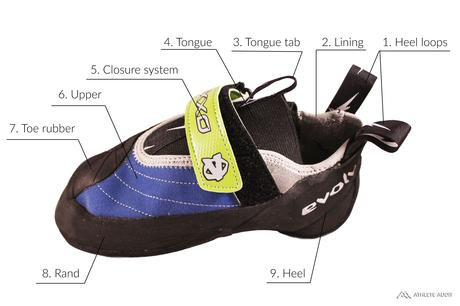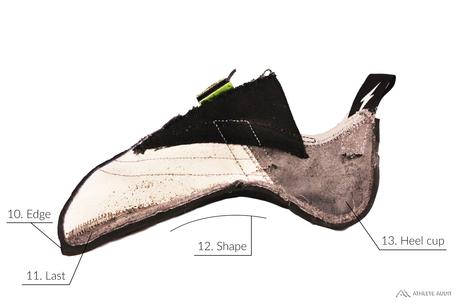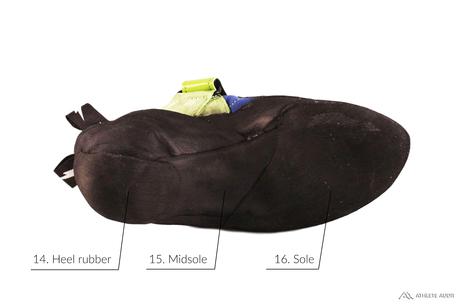Parts of a Climbing Shoe



- Heel loops – Use them to slip on climbing shoes with ease or clip them to a carabiner for easy carrying
- Lining – Since you’re supposed to wear climbing shoes barefoot, a lining is added for comfort
- Tongue tab – Found on slippers and velcro shoes, used for opening the shoe’s mouth for easy foot insertion
- Tongue – Thin and sometimes padded for improved comfort
- Closure system – Slipper, velcro, or laces, choose what you prefer. Some closure systems are good for specific styles of climbing
- Upper – Almost all climbing shoe uppers are made of either unlined leather, lined leather, or synthetic leather, each with their own pros and cons
- Toe rubber – Higher performance climbing shoes have rubber on top of the toe for toe scumming and hooking
- Rand – Refers to the rubber covering the toe of a climbing shoe
- Heel – Most climbing shoes make use of a slingshot heel (introduced by Five Ten in 1991)
- Edge – The prominent end of a climbing shoe that allows you to stand on small edges
- Last – What a climbing shoe is built around. Determines the shape and width of a shoe
- Shape – Refers to the curvature of a climbing shoe. Flat-soled shoes offer more comfort, down-turned shoes offer more performance
- Heel cup – Locks in the heel to prevent any movement or slipping
- Heel rubber – The patch of rubber covering the heel that is crucial for heel hooking
- Midsole – Many down-turned shoes lack a midsole in the arch to improve performance. Those with a midsole provide more comfort for standing on
- Sole – Refers to the rubber underneath your forefoot, which is primarily what you climb on
Learn how to choose climbing shoes here




